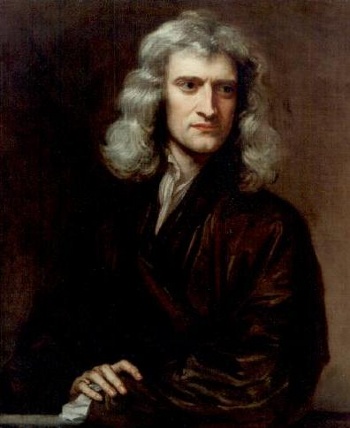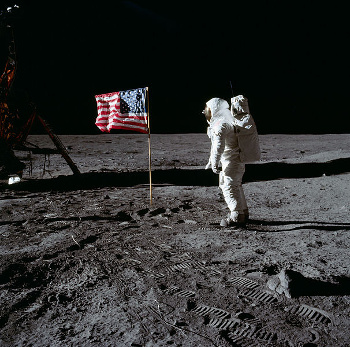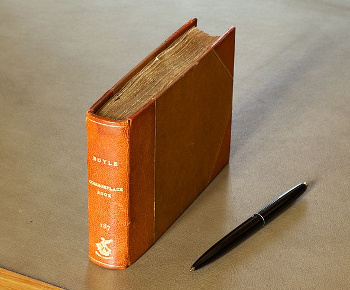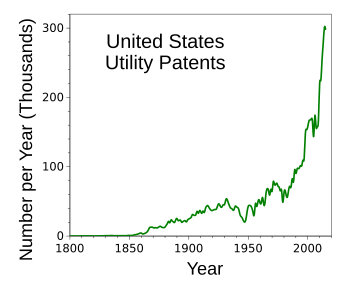Robert Boyle's To-Do List for Science
February 2, 2017
Early
scientists were not really "scientists," since the term wasn't used before 1833. In that year, "scientist" was
first used by
William Whewell to describe a practitioner of
science. Whewell, an
English polymath and
historian of science, also coined the term, "
physicist," since "
physician" had already been taken. Scientists before then were known as "
natural philosophers." As my
wife reminds me when I espouse
hypotheses outside my fields of specialty, the minds of
philosophers venture into many remote areas.
This has been a problem for some modern natural philosophers who think that a high
credential in science makes them an expert in everything.
William Shockley, who shared the 1956
Nobel Prize in Physics for the
invention of the
transistor, became an advocate of
eugenics in his later years. Some have
theorized that Shockley's behavior may have been the result of a
brain injury from a 1961
automobile accident.
Renowned physicist,
Isaac Newton, was interested in many things beyond
physics, as
his alchemical studies prove. In addition to such
occult studies, Newton wrote a
timeline of
history.[1] His 1728
chronology, "
The Chronology of Ancient Kingdoms," used numerous
astronomical references in
classical literature to set dates,[2] an approach unlike the traditional one of his time of using
scripture as source material.

A 1689 portrait of Isaac Newton by Godfrey Kneller (1646-1723).
I wrote about one of Newton's extracurricular activities in an earlier article (Newton's Chronology, March 6, 2013)
(Via Wikimedia Commons.)
Among the
classics that Newton utilized in this study were the works of
Herodotus,
Hesiod,
Homer,
Pliny, and
Plutarch. The earliest date he was able to verify was a reference to an
Egyptian Pharaoh, possibly
Ramesses IX, in 1125 BC. Those who fret about
potentially hazardous asteroids might be interested in Newton's
prediction for the end of the world, which is 2060.
Robert Boyle (1627-1691) was a natural scientist who flourished about the same time as Newton. While he practiced physics, he is best known for his
chemistry; indeed, he is often called the first modern chemist since he relied on
experiment, just as the first modern physicist,
Galileo (1564-1642), is known for his experiments. Boyle is best known for his
eponymous law,
Boyle's law, that relates the
pressure P and
volume V of a
gas in a closed system at constant
temperature,
P1V1 = P2V2
in which the
subscripts denote two different (P,V) states.
Boyle's principal work on chemistry is
The Sceptical Chymist. Published in 1661, this book presents Boyle's rejection of
Aristotle's four elements, asserts
atomism, and posits the existence of the
chemical elements. Still, Boyle has some
alchemist left in him, since he believed in the
transmutation of metals, and he did experiments to attempt transmutation. Boyle had great faith in the
scientific method, as I'll explain.
Scientists have great faith in science, and they imagine that proper application of the so-called "scientific method" will solve most of the world's problems and create wondrous things. My
maternal grandmother was born eight years before the
Wright brothers made the
first flight of a powered aircraft on December 17, 1903, and she lived to see
men walk on the Moon.

Astronaut, Buzz Aldrin, on the Moon, July 20, 1969. The Lunar Module is at the left, and the American flag takes center stage.
This image can clearly be designated as iconic.
(NASA image GPN-2001-000012 by Neil A. Armstrong, via Via Wikimedia Commons.)
The idea that science can do so much in a single lifetime makes us yearn for our glorious future. That was Boyle's idea when he wrote a list of things that he believed that science could deliver in the future.[3-6] In the
centuries since Boyle's time, science has achieved 21 of the 24 items on his list. The three not achieved are
healing wounds at a distance, although
telemedicine might be considered as fulfilling this item; a
universal solvent; and the transmutation of metals.[4]
Why our
ancestors sought a universal solvent is beyond me. Of course, there's the
joke about the
inventor who did find a universal solvent - His problem was that he didn't have a
bottle to store it in.
Nuclear transmutation of elements is routinely done in
particle accelerators, and it has been proposed that some rare elements could more conveniently be made this way than
mined from
ore when
energy becomes
less expensive. Boyle meant the traditional transmutation problem of
lead into
gold, which has not been done.

Robert Boyle's notebook from 1690-1691, one of many volumes of Boyle's papers in the archives of the Royal Society of London.
(Via Wikimedia Commons.)
![]()
Here's Boyle's list.[3]
1. The Prolongation of Life.
2. The Recovery of Youth, or at least some of the Marks of it, as new Teeth, new Hair colour’d as in youth.
3. The Art of Flying.
4. The Art of Continuing long under water, and exercising functions freely there.
5. The Cure of Wounds at a Distance.
6. The Cure of Diseases at a distance or at least by Transplantation.
7. The Attaining Gigantick Dimensions.
8. The Emulating of Fish without Engines by Custome and Education only.
9. The Acceleration of the Production of things out of Seed.
10. The Transmutation of Metalls.
11. The makeing of Glass Malleable.
12. The Transmutation of Species in Mineralls, Animals, and Vegetables.
13. The Liquid Alkaest and Other dissolving Menstruums.
14. The making of Parabolicall and Hyperbolicall Glasses.
15. The making Armor light and extremely hard.
16. The practicable and certain way of finding Longitudes.
17. The use of Pendulums at Sea and in Journeys, and the Application of it to watches.
18. Potent Druggs to alter or Exalt Imagination, Waking, Memory, and other functions, and appease pain, procure innocent sleep, harmless dreams, etc.
19. A Ship to saile with All Winds, and A Ship not to be Sunk.
20. Freedom from Necessity of much Sleeping exemplify’d by the Operations of Tea and what happens in Mad-Men.
21. Pleasing Dreams and physicall Exercises exemplify’d by the Egyptian Electuary and by the Fungus mentioned by the French Author.
22. Great Strength and Agility of Body exemplify’d by that of Frantick Epileptick and Hystericall persons.
23. A perpetuall Light.
24. Varnishes perfumable by Rubbing.
Some items, such as
human flight, are easily seen to have been achieved, while an
LED lamp coupled to a
supercapacitor and
solar cell likely qualifies as a "perpetual light." "Varnishes perfumable by Rubbing" would be
scratch-and-sniff perfume ads, and
Kevlar qualifies as a
lightweight armor. Biotechnology has fulfilled several of the list items, but it's interesting that many of the items have been achieved in just the past few
decades. This is a good example of the
exponential nature of
scientific progress.

Patents issued per year - One indicator of the exponential growth of science and technology.
(Graphed using Gnumeric from United States Patent Office data.[7]
![]()
References:
- Isaac Newton, "The Chronology of Ancient Kingdoms" (Project Gutenberg). Also at The Newton Project.
- Yaël Nazé, "Astronomical arguments in Newton's Chronology," arXiv, December 20, 2012.
- Felicity Henderson, "What scientists want: Robert Boyle’s to-do list," Royal Sociey Blog, August 27, 2010.
- Richard Alleyne, "Robert Boyle's Wish list," Telegraph (UK), May 3, 2010.
- Richard Alleyne, "Robert Boyle's prophetic scientific predictions from the 17th century go on display at the Royal Society," Telegraph (UK), June 3, 2010.
- Robert Boyle’s To-Do List for Future Scientists, Irish Philosophy Web Site, August 11, 2014.
- U.S. Patent Activity, Calendar Years 1790 to the Present, US Patent Office.
Permanent Link to this article
Linked Keywords: Scientist; William Whewell; science; English people; polymath; History of science; historian of science; physicist; physician; natural philosophy; natural philosopher; wife; hypothesis; hypotheses; philosopher; credential; William Shockley; Nobel Prize in Physics; invention; transistor; eugenics; theory; theorize; brain injury; traffic collision; automobile accident; Isaac Newton; physics; Newton alchemical studies; occult; timeline; history; chronology; The Chronology of Ancient Kingdoms; astronomy; astronomical; classics; classical literature; religious text; scripture; Godfrey Kneller (1646-1723); Herodotus; Hesiod; Homer; Pliny the Elder; Plutarch; Egypt; Egyptian; Pharaoh; Ramesses IX; potentially hazardous asteroid; prediction for the end of the world; Robert Boyle (1627-1691); chemistry; experiment; Galileo Galilei (1564-1642); eponymous; physical law; Boyle's law; pressure; volume; gas; temperature; subscript; The Sceptical Chymist; scientific literature; publish; Aristotle; classical element; four elements; atomism; chemical element; Alchemy; alchemist; Magnum opus; transmutation of metals; scientific method; grandparent; maternal grandmother; Wright brothers; first flight of a powered aircraft; Apollo 11; men walk on the Moon; astronaut; Buzz Aldrin; Moon; Lunar Module; American flag; cultural icon; iconic; Neil A. Armstrong; Wikimedia Commons; century; healing wounds; telemedicine; alkahest; universal solvent; ancestor; joke; invention; inventor; bottle; nuclear transmutation of elements; particle accelerator; mining; mined; ore; energy; cost; less expensive; lead; gold; notebook; archive; Royal Society of London; human flight; LED lamp; supercapacitor; solar cell; scratch-and-sniff; perfume; advertising; ad; Kevlar; body armor; lightweight armor; biotechnology; decade; exponential function; exponential nature; scientific progress; patent; technology; Gnumeric; United States Patent Office data.